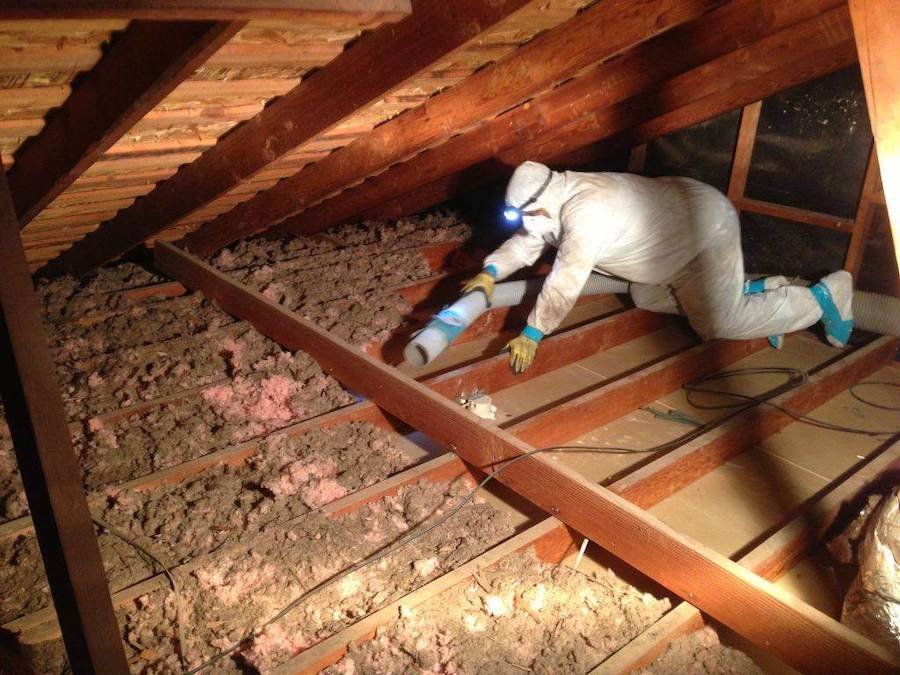Attic insulation is good for many reasons, including energy efficiency and lowering energy costs. However, the insulation material can get old over time and may require removal and replacement. Old insulation removal should naturally be done by a trained and professional expert to prevent safety and health issues. However, if you’ve chosen to DIY it, then you need to know the essential steps.
Before pushing to remove your attic insulation, you should be able to answer the why. Most homeowners remove their attic insulation because;
- It has become old, and its time for a change
- It has become compromised or damaged by water
- It’s beginning to host mold and pests like raccoons, mice, opossums, etc.
If you’re in the same or similar situation as listed above, completely removing your old insulation is the best bet. Here’s how to.
How to remove attic insulation
Before diving into the project, you must prepare a plan and gather all the essential tools to make the job go smoothly and safely. Below are some of the essential tools to gather for the project;
Masks: Be sure to get face masks, at least an N95 face mask, to protect you from inhaling insulation dust. Ensure to keep the mask on at all times until the project is completed.
Gloves: Get a rubber-coated glove to protect your hands
Eye protection: Get some goggles to protect your eyes from insulation dust or others. Goggles with anti-fog coating work best
Safety coveralls: You need safety wear to cover and protect your skin from possible contaminations and irritants.
Flashlight or headlight: This will help you navigate the otherwise dark attic space better.
Removing Blown Cellulose Insulation
If your home has blown cellulose insulation installed, removing it can be quite tricky. Here are the steps involved;
- Set your equipment and supplies for the job in your driveway or garage.
- Prepare your home to be worked on, including the attic by clearing it. Make a direct path from the supplies to your attic. Cover the walls and floors along the path between the attic and supplies with protective material. Also, do not forget your sturdy ladder.
- Set your commercial vacuum up and pass the hose through your home to the attic to get started.
- Set yourself up with all required safety gear before getting started.
- Climb into your attic space and safely begin the removal. Ensure that your rakes are targeted at the right places. Keep your dustpan at arm’s length to ensure easy reach and collect the raked insulation waste into a waste bag.
- It is important to take a break every 10 to 20 minutes, especially if your body temperature rises above a comfortable threshold. You can split the removal process into sections, addressing each section within a 10 to 15 minutes session and taking a break to cool your body temperature.
- Once fully removed, remove waste bags and dispose of them properly. Also, ensure that the attic is properly vacuumed before packing up your tools.
- Ensure all tools used are cleaned properly at the end of the insulation removal process.
Removing Fiberglass Batt Insulation
If your home has the fiberglass batt insulation installed, here are the removal steps to follow;
- Prepare your home and worksite. This includes clearing a path from the attic to where your supplies are located, whether in the garage, lawn, or inside the home. Be sure to cover the walls and floors of areas you’ll be working in with a protective coating.
- Get your commercial vacuum ready and connect it to the attic space. Get other supplies like rake, packer, and was bags.
- Ensure that your safety gear is properly fitted before climbing into the attic space to get started.
- To remove your fiberglass batt insulation, roll up each insulation piece and safely collect it in the waste bag.
- Use your commercial vacuum to clean the attic floor at the end of the roll-up and removal process.
Following the removal of your attic insulation, you should know that your home will become less energy efficient. This means that you may spend more on heating or cooling your indoor space, especially because there’ll be a greater transfer of air between the indoor and outdoor space.
A good way to reduce this energy loss is to have a plan for a new attic insulation installation. For an excellent insulation installation, you may need to contact a professional insulation contractor. The contractor can advise you on the different options and recommend one based on your energy needs. They can also complete the installation process faster and excellently.

